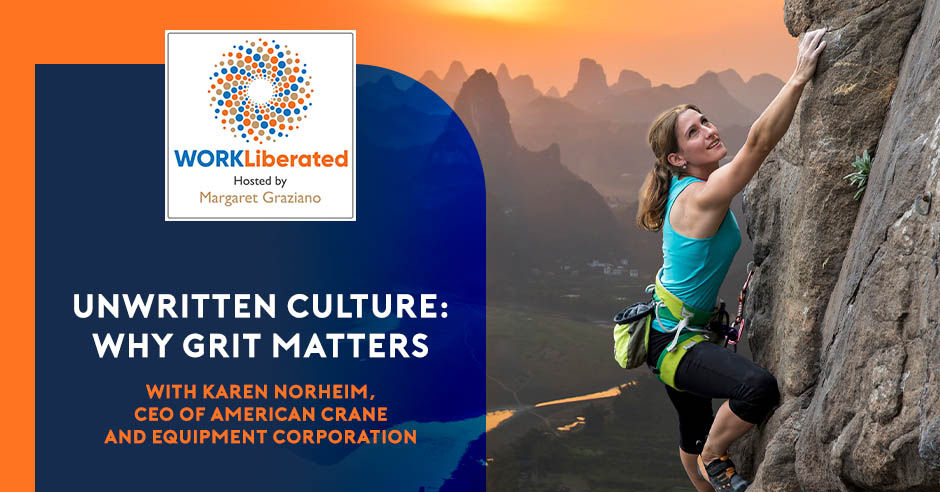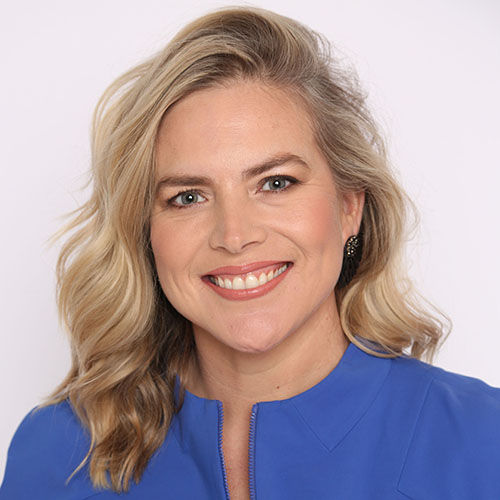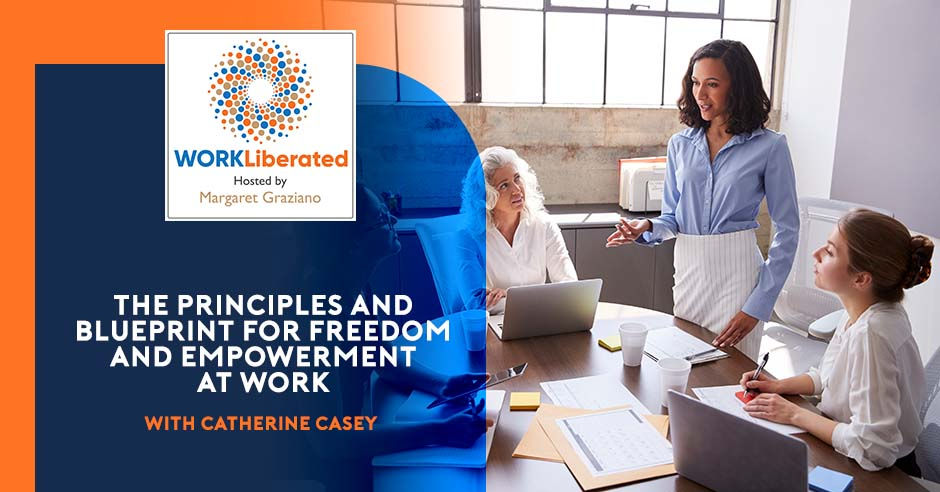Unwritten Culture: Why Grit Matters With Karen Norheim CEO Of American Crane & Equipment Corporation
- Margaret Graziano

- Mar 14, 2023
- 18 min read

All companies have a culture, but many remain to be unwritten. That is often the case when you have an exceptionally charismatic and effective leader who, in many ways, is the culture. But what happens when that leader is ready to pass on the torch to their predecessor? That unwritten culture will have to be codified, and that’s a challenge on its own. When Karen Norheim replaced her father as CEO of American Crane and Equipment Corporation, she was in the best position to finally put that unwritten culture into words. She had grown up surrounded by the family business, and she had the immense fortune of being mentored by her father. In this episode, Karen tells us why “grit” was the word that resonated the most with her and her team and why it aptly encapsulates what their culture was under her father’s leadership and what it continues to be under hers. Tune in!
---
Watch the episode here
Listen to the podcast here
Unwritten Culture: Why Grit Matters With Karen Norheim, CEO Of American Crane And Equipment Corporation
Welcome to the show with Karen Norheim. Karen, could you please tell us a little bit about you and the company you run?
Thanks so much for having me. I'm excited to be here. I am the President and CEO of American Crane and Equipment Corporation. We're a leading manufacturer of overhead cranes and hoists. We're located in Pennsylvania, just about an hour outside of Philadelphia. It’s a family-owned business. I'm the second generation running the company. A lot of times when people think of overhead cranes, they think of mobile cranes outside. What we build while similar is permanently installed inside of buildings. Some of our big customers include the energy industry doing work in things like nuclear power. We also work in aerospace. We have equipment with NASA. In addition, we do work with other manufacturers in our local area as well. It's very exciting.
I met Karen on my journeys around the country with Vistage, which is a CEO mastermind group and I'm one of their speakers. In getting to know her, I was struck by the level of knowledge and passion that she has for organizational culture, which is why she's a guest in this episode. She is going to talk to us a little bit about how the culture of her company was built, the journey along the way and then having to reinvigorate culture. Tell me about, as a girl growing up with this business with your father running it, what was that like for you? One of the things that I found very interesting is your journey as a young woman learning about business, what you noticed and then we'll keep diving in and out.
My father's an immigrant from Norway. He came to the US in his twenties. He was a part of the group that founded American Crane. He ended up turning it from a struggling business into a thriving enterprise. It’s a big influence on my life. I remember walking around the shop as a kid and loving the smells of oil. We do a lot of metal fabrication. It was enjoyable. My dad was such a role model with an entrepreneurial spirit, all around and wonderful. What was interesting is while I always wanted to be in business and he always inspired me to want to be my own boss at some day, I didn't necessarily think I was going to go into the family business, per se.
He recruited me to come and work for him and I was very reluctant. I was like, "What are these cranes and hoists? Manufacturing doesn't sound all that glamorous. What is this?" It turns out I was very wrong about my reluctance that I am able, through American Crane, to follow my passion for manufacturing and get to work with amazing people such as my dad. I've been there for many years. It's been one of the best decisions of my life.
How old were you when you took over running this business being the Chief Executive Officer?
I had the title first of President and COO. In a family business when my father was going to do what he called retiring, which was still having his fingers in the business, mentoring us, he wanted to keep the title of CEO. I had President and COO right around 2019 when I got that title in time for the global pandemic, where I was effectively running the company on my own with his guidance, per se but he wasn't involved in the day-to-day. We lost our father in 2022. At that point in time, I then did transition into President and CEO. The company is owned by me and my sister. We're a certified woman-owned business enterprise.
You're being mentored and coached by your dad. There are so many questions I could ask but I want to go back to when you joined the organization. Even when you were being mentored and coached to lead and have this leadership role, what was the culture that he had built?
We had a good culture as far as it was effective and we are a smaller organization than we are now but it was word of mouth. We always go back to our Norwegian heritage and Viking history. My dad came back from Norway on a trip and he had this big sign called Viking Laws. It was very applicable to business. I could have a whole other conversation on it but he's like, "Karen, this is our culture." He was right because our culture was an unwritten code of conduct passed down from generation to generation. It wasn't written down. Maybe at the time, we had started to identify some core values but it was undefined as far as locking it in on paper.
He was the culture. He was creating that vibe. He had a great vision for what that felt like and doing that all organically. We started to do the reboot of our culture around 2018, a little bit earlier than 2019, because I saw that in the future, my dad wasn't going to be around forever and what was going to happen to our culture if he wasn't there having that founder's legacy leading it forward. We went through a lot of work to lock it in and define what our culture is and put words and meaning to that.
Thank goodness we did that because it was a couple of years before the pandemic hit so that helped us to survive those storms. With losing him, we survived that as well, all from spending the time, I like to call it being the gardener, because this is a labor of love when you work on culture. It's like farming. It doesn't end. You plant seeds, nurture, grow and harvest them and then do it all again. The cycle is never-ending, as I'm sure you know.
First of all, I am sorry for your loss. From the little bit that we've spent together, I know the passion and compassion you have for your family and reverence so I want to acknowledge that. With this unwritten code of conduct, the Viking Laws, give me the experience of being a new person who comes in. There are a lot of pre-client prospects that will call me and say, "We don't have anything written down. It's awesome." I'll then talk to somebody else in the company and they'll say, "It's awesome sometimes but it's not awesome all the time." Give us a sense of what it was like to work in these unwritten rules and then what worked and didn't work about that. I'll then ask more questions about how you made the transition.
During that period, there was a lot of emulation of the leader so leading by example worked very well. Some things weren’t as great. Our communication wasn't always perfect. It's hard to say that one is communication perfect. We did have some difficulties communicating between departments and people, which is making those assumptions that people understood or that they knew what was going on. That's where the danger zone comes in because people can have very different interpretations of things. I like to think of culture as behavior. If you don't define those behaviors well, they can be interpreted in a couple of different ways.
Culture is behavior. If you don’t really define those behaviors well, they can be interpreted in different ways.
While we were lucky, had done amazing things as a company and grown and added new people, we had an onboarding process but not well defined, more of the safety for manufacturing and a few shirts that you got here and there, not a real locked-in process. We were lucky because we still had, at that point in time, a very high retention rate of employees, which spoke to taking care of people. Taking care of your people was the vision that my dad had.
You make sure people have a great place to work and then you let them go be awesome. Another downside to that is because we weren't intentional, there was the ability for people to hijack the culture and turn it into what they wanted, which I do think, we did have occasionally in different areas. It worked very well but had some areas for improvement and was led by the vision of my father and his very personal mentoring too of people.
The unwritten culture is to treat people well, let them be, spend time with them, mentor them and make sure that they're equipped. All that worked but what didn't work is sometimes, certain people would turn it into whatever they wanted it to be and that didn't work. He was still around when you transitioned. The Viking Law was not the end-all-be-all. What was that conversation like?
We started by trying to come up with some wording around what taking care of people and what we did as a company feel like. I came across the word grit, which resonated with me. Grit is the perseverance to keep going despite obstacles and move things your way. We do a lot of very complicated projects and specialized lifting equipment from engineering through to manufacturing and installation. We may have come against the nature of doing our job and some difficult things that we have to overcome. We don't make the same thing twice.
The word grit resonated. We ended up turning that into a mantra of grit matters, perseverance, heart and integrity. The transition of it was teasing out and vocalizing. I say vocalizing because as a CEO, I'm the Chief Reminding Officer and you have to vocalize and have ways that you can clearly communicate, say, grit matters, “Here's what we mean by this. We talk about being humble. It means you're willing to sweep the floor,” or stuff like that, having to have that verbalization. That was a big part of it. Once we defined that vision, mission and behaviors piece of it, we then rolled it out to the company and had meetings with every employee.
I threw everything at it because I knew we had to lock this in from the t-shirt to everything. At the time, we had weekly meetings about the culture, trying to get people comfortable. A lot of what that was doing was communicating two of these lessons that my dad taught me. I always say he taught me to be a gardener. It's my job to make sure that our company is an environment that allows everyone to thrive. He also taught me to be a Viking, which is to be able to go out, fight the business battles and do the things that are what we do for our customers. The crux is that the Vikings were farmers. They were more farmers than warriors.
You have to do the prep of the gardening and have that bounty behind you so you can go out and fight those business battles. Learning those lessons and communicating to everybody, the importance of the two. The other big thing that is why my eyes opened and I was pushing so hard for us to do this is I had our buyer come up to me one day and we have a very close relationship. It was probably in the 2017 timeframe. She says, "Can I ask you this personal question?" I said, "Sure. You can ask me anything." She said, "Karen, what are you going to do when your dad is gone? Are you going to sell the business?"
I was floored because I had been there. At the time, it was almost fifteen years of putting my blood, sweat and tears into this and committing but if she didn't know that I was committed to the business, then others didn't know as well. There's a twofold piece here, showing the employees that there is continuity and that we're going to keep these great things that we have. We're going to lock them in so that we can build on them for the future and also let them know that there is continuity in me being committed to the business and going to be there and that our family was committed to the business as well.
When I work with CEOs, I remind them all the time that the minimum amount of reminding is seven but honestly, it's like every week in every meeting. When did you get that you needed to be the Chief Reminding Officer? How do you weave reminding into your everyday work life?
I'm always about, “Can I have a little help for my friends?” I look to others who have done this well and try to learn from them. From my Vistage group, I had a chance to see how some other people had been working on their culture and having great success. It stuck with me this idea of making sure that we're communicating, reminding, talking and making it a part of the fabric of who we are that we're talking about these things. That has turned into regular. We do a Friday email that talks about the culture, core value of the month and what's going on, celebrates the new orders that we're getting and talks about hiring and all of those pieces.
We do a Monday communication, which is a video celebrating birthdays and anniversaries. It might be talking about a safety topic in one week, orders or a core value or behavior that we believe in. We also do trivia on Wednesdays. It's a quick email, asking. Those are the lock-in that is always happening. In addition, at the beginning of every one of my leadership team meetings, I talk about the core value and highlight my thoughts for our leadership team. We also have, depending on the group, bi-monthly and monthly meetings where we talk about a value.
We let an employee share what a particular core value of the month means for them or what our vision or mission is, some piece of that and share a little bit of themselves. I'm always wearing grit logo apparel. I'm always bringing it up. We use the word grit in a lot of our internal conversations. As the leader with an executive presence, I'm always there. People are looking to me and the other leaders to take notes on what's going on. That's where emulation of behavior can happen. I make sure I'm always talking about it.
I might get tired of saying some of the same things over and over but it's important using the same language to communicate with employees, making sure that I do things like making eye contact with people, saying hello and making a conscientious, intentional effort to communicate and behave the way that we are asking everyone to be, trying to emulate at that as best as possible. I'm not always perfect. No human is. That's an important part of the communication of it too.

All of those are the different things you're doing like on Monday morning and Wednesday. The architecture, what I'm hearing is in service of creating that alignment. I understand what grit means. Is grit also an acronym for something?
We don't have it as an acronym, just strictly the word. We felt that it represented myself, my dad and our company. We'll roll up our sleeves and pull together to get around anything that gets in the way of us getting our equipment to a customer. It resonated as an individual word.
Do you have any stories about a new employee who maybe wasn't demonstrating grit or didn't understand that the obstacles are part of the game? We're in the game of obstacles. Every game has obstacles. Even in game theory, you design your obstacles. Do you have a story of somebody that didn't understand that and you used the grit concept to teach them? Instead of looking at it as a problem, look at it as part of the game.
That happens all the time. To give you a specific example, working through supply chain challenges of things that are going on in the industry at large in our space, having to not only figure out how we're going to get parts, micromanaging our vendors and working on it but then also having to communicate back to the customer. Talking with our project management team who does an excellent job and making sure that they know that this is part of what they have to do. They have to remove this. This is the game. They know that two newer project managers get it. The ability to point out one of our key pieces is that our job is to make our customers' lives easier. We do what we say we're going to do. We do it well and on schedule.
That means that we hold up our commitments. That's a big part of who we are. If we tell you we're going to do something, we're going to do it. If something happens like supply chain issues and there's going to be a surprise, we immediately go to the customer, talk that to them and say, "This is what we're hitting up against. We're going to work through this. These are the solutions we've already figured out." I use that a lot too. Don't come to me with a problem unless you've come up with a few solutions too. Start thinking ahead, instead of just delivering up the issue. That is a part of our normal conversations and how we navigate spaces.

We then deepened our onboarding. We do truly have an onboarding process, which includes training on not just the company in general but also on what it means to be a part of our culture. We pay a lot of attention to whom we hire and make sure that we're getting the right people on our team and that they align with who we are and what we are passionate about.
When you look at the word grit, what are some adjectives or behaviors that you interview for so you can determine if somebody has grit?
I don't do a lot of interviews at the moment but a key thing is flexibility. We're a company of about 170 employees. We're not super small but we're also not super big. We're somewhere in that middle space, which means that I like to go back to my Viking analogy. We can raise our sails and adjust to the wind. We're always checking the wind to say, "Where is it going?" We're agile and flexible enough to shift directions and pivot if needed. The ability to be able to handle that is a big deal. Attitude is huge. Having a positive attitude, being willing to learn and being curious are very important things. Having integrity and the definition of integrity would revolve around being honest.
That goes back to that no surprises, making sure you're being honest. Be accountable. “Something happened and I need help. This happens and it's my fault.” You got to be able to take accountability because stuff's going to happen. If we don't know what's going on, we can't navigate through them. That also is creating a psychologically safe space for people. Follow through. Look for examples of follow-through and also passion.
Passion's a difficult word to think about as well but that can play also into this looking for curiosity and willingness to learn and evolve with us. We will always be in the process of building the business for where we're going, not for where we are. I don't think that's ever going to end. We're trying to always evolve. That road to success is always under construction, brings that to mind.
We're trying to always evolve. The road to success is always under construction.
It sounds like a couple of other things that are baked in is proactive solution oriented, not being the victim to what's happening but, “This is what's happening and I've got to do something about it.” The growth mindset sounds like that's how you operate and how you need people to operate. There's a pillow or something behind you that says, “Corporate hippie.” What does that mean?
I'm probably not what you would classify as a hippie but corporate hippie to me means that I can be my authentic version of what a CEO is. To me, that means caring about our people. They are the most important part of our business. Find a way to create this environment where they can work. It's my job to constantly be looking, tweaking and checking that things are set up in the best way that they can be. It's going against the grain. Also, there are not many women in my industry, especially in the crane industry. I've never had a problem. I don't know if going against the grain is but being an outsider, breaking the rules a little and trying things new. Honestly, the pillow is all about not taking yourself too seriously.
The Monday morning video, is that always you or it's a different person each week? How do you guys work that out?
The videos started as an add-on because, during COVID, we needed to touch people. It was the start of making sure we communicate. It evolved into a production that we're doing every week. It does have very specific segments. We celebrate any birthdays and anniversaries that week of any employee. We then go in and highlight whatever the core value is for the month.
It then does change in content. I probably do a message about once a month and then we'll pick a highlight of a department. That's the other thing. As you get bigger, remember this, not everybody knows each other and what other departments are doing so you have to share all those stories. We do one video per month about any new orders that came in or any shipments, anything of interest about the work that we do.
People take pride in that. We make sure they get to hear about where the equipment's going and what is it getting to use. Our equipment is used to work on the Orion project, part of the Artemis NASA project that's been going on in the news. It's great to tell our employees this so they can get excited about it. We’re sharing those stories. Our Head of Service will do a conversation. He'll talk about what they're working on in their group. Also, our sales group will do that. We do safety messages.
We try to change it up to keep the content fresh. We always include any positions we're hiring for. We let employees know whether for themselves but also they're our best source of recruitment and then wrap it in. I am very intentional about our company messaging. We have both internal and external three-prong messaging that we define as the leadership team. I always try to make sure that we're weaving that. It doesn't change a whole lot, maybe changes every couple of quarters but we’re making sure that all of those pieces are there altogether.
How long is that video?
It ranges anywhere from 3 to 6 minutes, depending on what the content is.
Do you take time to see who's watching it or you're not interested in the statistics? You just want to deliver it and it's up to them to watch it or not.
It's up to them to watch it or not. My philosophy on this is even if they don't open and watch it, they still got an email that was from the company specifically to them. Even the ping and the dopamine of, "This was for me," can help. We also do want them. People talk about the videos with each other. They'll bring it up. They resonate with some of the mantras that we put in there. Some of my background is in marketing. We have to market this as well to the people. I do want to know how many people are looking at it. That's a great metric to track for a KPI. We've shifted. We started very grittily.
When we first did it, we were just using iPhones and cutting together video through a simple service. Now, we've evolved where we have added to our marketing department so that they can do their video editing and premiere and move that whole piece along. Before, it was just a Google link on a shared Google Drive. Now, we've evolved into leveraging one of our marketing software to deliver it because we can see then who clicks on it and how we're doing. If the content is stale, shame on us. We had to best make it more energizing. That's part of how it goes. We always had employees that were in different buildings and some that were always on the road. This is a great enhancement to making sure that everybody feels like they're part of the organization.
Karen, you've been a wealth of knowledge about not just talking about culture but implementing and living it. Thank you so much. The last and final question is what is the most fulfilling part of being a CEO to you?
For me, it's watching people and the organization grow. It goes back to that gardening piece and watching things get nurtured and evolved. We're entering a new industry in the semiconductor industry with cleanroom cranes. Seeing that and all the hard work that went into that nurture and come to life is exciting. Also, seeing people and our leadership team over the last several years evolve and have success. My father would be so proud of us for how far we've come, where we're at, what we're doing and all the exciting work that's going on. For me, it's the ability to nurture and then see the fruits of your labor unfold.
Watching people and the organization grow is the most fulfilling part of being a CEO. It’s like seeing the fruits of your labor unfold.
I have an executive offsite with one of the largest semiconductor companies that would be a co-seller in the cleanrooms. They deal with the solutions and all that stuff. I might do an intro. Thanks for the inspiration. If you know of anybody who'd be a great guest as a CEO who's doing the gardening for culture, that's where the show is going, real-time CEOs who are walking their talk.
I'll be happy to send some your way and excited to listen because I'm still learning too. The journey never ends here.
Thank you so much. Have a great rest of your day.
Thank you.
Important Links
About Karen Norheim

Karen Norheim is passionate about all things manufacturing. As the 2nd generation leading her family’s company, American Crane & Equipment Corporation, Karen has sought to solidify the “Founder’s Legacy” while putting her own stamp on the company culture. Karen’s company’s journey to their mantra – Grit Matters: Perseverance, Heart & Integrity is the reboot of their vision, mission and values. Her role, as she puts it, is that of the gardener as she leads American Crane, a recognized leader in the design and manufacture of cranes, hoists and other material handling equipment.
Fun Fact: Myself and my family republished my uncle’s children book Sprout
Profile pic: see attached, hope that works
Link: AmericanCrane.com




Comments